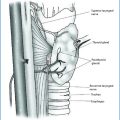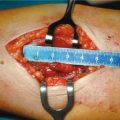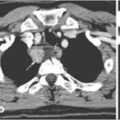A Strongly recommend
B Recommend
C No recommendation
D Recommend against
I Insufficient evidence
Disease
Primary hyperparathyroidism
•
Secondary hyperparathyroidism
•
Reoperative hyperparathyroidism
•
MEN1
•
Parathyroid carcinoma
•
Venous/tumor localization
Pre-surgeryangiography suite
•
Operating suite
•
Implementation
Specific assay
•
Testing location
•
1.
Based on evidence for improved patient/health, operational, and economic outcomes, we recommend routine use of intraoperative parathyroid hormone testing for patients undergoing surgery for pHPT and strongly recommend routine use in minimally invasive or directed procedures.
2.
Numerous case series suggest a role for intraoperative PTH in secondary or tertiary hyperparathyroidism yet no studies compared outcomes to surgical procedures where intraoperative PTH testing was not used. In addition, criteria for expected changes in PTH concentrations following total or subtotal PTx require further study. Therefore, we make no recommendation for or against routinely providing intraoperative PTH testing for this application.
3.
Evidence with respect to successful surgical outcome shows utility of intraoperative PTH in patients undergoing reoperation and therefore we recommend that the assay be used routinely in this patient population.
4.
We make no recommendation for use of intraoperative PTH testing in patients with MEN1 since results, although positive in several case studies and several larger retrospective series, were lacking for control groups.
5.
We conclude the evidence is insufficient to recommend for or against use of intraoperative PTH measurements in patients with parathyroid cancer.
6.
Despite limited evidence, we recommend that intraoperative PTH measurements be considered as a replacement for traditional laboratory measurements of PTH during venous localization in order to provide real-time results to the angiography team to guide sampling. However, we make no recommendation for use of rapid PTH tests in the operating suite for tumor localization due to conflicting studies. Although this may be a promising application for the rapid assay, additional studies are needed to determine whether this approach is better than more current and improved preoperative scanning techniques and the most appropriate population for use, such as reoperative cases, since routine use is not justified.
7.
There is no evidence to suggest superiority of an intraoperative intact PTH assay from a particular manufacturer compared to available assays. We do not recommend the use of a specific assay for intraoperative PTH monitoring. Additional studies comparing biointact or whole PTH rapid intraoperative assays to intact rapid intraoperative assays need to be performed to determine whether improved benefit exist.
8.
We recommend in patients undergoing PTx for pHPT that baseline samples be obtained preoperation/exploration and pre-excision of the suspected hyperfunctioning gland. Specimens for PTH should be drawn at 5 and 10 minutes post-resection with a 50% reduction in PTH concentrations from the highest baseline as a criterion. Additional samples may be necessary. Kinetic analyses appear promising, however more work needs to done to confirm their utility (Table 4.2).
Table 4.2
Comparison of criteria for use of intraoperative PTH
Criteria | False positives (%) | False negatives (%) | Accuracy (%) |
|---|---|---|---|
≥50% from highest baseline | 0.9 | 2.6 | 97 |
at 10 minutes | |||
≥50% from pre-incision | 0.3 | 16 | 86* |
baseline at 10 minutes | |||
≥50% from highest baseline | 0.4 | 24 | 79* |
at 10 minutes and within | |||
reference range | |||
≥50% from highest baseline | 0.6 | 6 | 95* |
at 10 minutes and below | |||
pre-incision value | |||
≥50% from highest baseline | 0.6 | 11 | 90* |
at 5 minutes | |||
≥50% from pre-excision | 0.6 | 15 | 87* |
baseline at 10 minutes |
9.
Evidence is lacking to recommend the location of intraoperative PTH testing either in or adjacent to the operating room or in the central laboratory. Important considerations such as interaction with the surgical team must be weighed in concert with costs and staffing issues. Studies to evaluate turnaround and operative times related to different locations have not been explicitly performed. Regardless of specific evidence, external validity may limit applicability to individual institutions.
The usefulness of intraoperative PTH monitoring in guiding adequacy of resection has been extensively documented in pHPT, whereas few data in reoperations, as well as in secondary and tertiary hyperparathyroidism, have been published. With the aim to optimize the efficacy of quick parathyroid hormone determination in the operating theatre, as well as to verify the most practical approach to PTH monitoring during parathyroid surgery, we reported our initial experience with QuiCk-Intraoperative Intact PTH immunochemiluminometric assay (Nichols Institute Diagnostics, San Juan Capistrano, CA, USA) on a portable cart directly in the operating room during 27 parathyroidectomies performed between September and December 1999 [15]. Studied population included 10 patients with pHPT (mean age 59.4 years, range 30–80), 12 end-stage renal disease patients with secondary hyperparathyroidism (46.3 years, range 30–74; average length of dialysis 118.5 months, 10–372), and five kidney transplanted subjects with tertiary hyperparathyroidism (49.8 years, range 36–64; average interval from graft 49.0 months, 25–96). There were nine reoperations (three pHPT patients, two of whom had multiglandular disease, and six recurrences in secondary and tertiary hyperparathyroidism, two due to supernumerary glands). Peripheral blood samples were taken at the induction of anesthesia, 5 to 10 minutes after resection and thereafter at times whenever judged by the surgeon. PTH results were available in a total elapsed time of 12 minutes. The mean PTH levels before and after PTx were 251.9 pg/mL (range 69–842) and 50.7 (5–184), respectively, in pHPT, 837.4 (416–1702) and 200.3 (53–440) in secondary hyperparathyroidism, and 205.6 (116–301) and 60.8 (23–97) in tertiary hyperplasias. All patients had significant percentage decline from pre-excision values regardless of the etiology of the hyperparathyroid state (mean 77.9%, 79.0%, and 68.0% in primary, secondary and tertiary cases, respectively) except one patient with recurrent secondary hyperparathyroidism (35.9% decline) whose PTH decreased from a post-excision value of 346 to 82 the day after surgery. While a reduction >50% was detected in 23 out of 27 patients after the first intraoperative sampling, additional dosages were requested by the surgeon in eight cases, including the four remaining (the one aforementioned, one secondary and two tertiary hyperparathyroidism), and two primary, one secondary and one tertiary hyperparathyroidism. According to an exponential model, kinetic analysis of PTH decay curves allowed the new post-excision PTH value to be calculated, thus rendering the interpretation of data independent of the sample timing and suggesting intraoperative PTH as the principal confirmation of adequate removal of all hyperfunctioning parathyroid tissue, at least in the earlier postoperative follow-up. On-site PTH monitoring with this user-friendly and reliable system, with a long shelf life and excellent machine stability and portability, has proved to be quite helpful in targeting PTH tests to give surgeons a timely and accurate assessment of intervention. PTH results influenced the operative approach in 29.6% (8 out of 27) of patients in our experience. Close communication and dynamic interchange with surgeons appear particularly important when multiple samples are needed. The development of optimal PTH sequence strategies with decision-focused analytical and clinical limits may improve the efficacy of “point-of-care” PTH assay and resource utilization [16].
Stay updated, free articles. Join our Telegram channel

Full access? Get Clinical Tree







